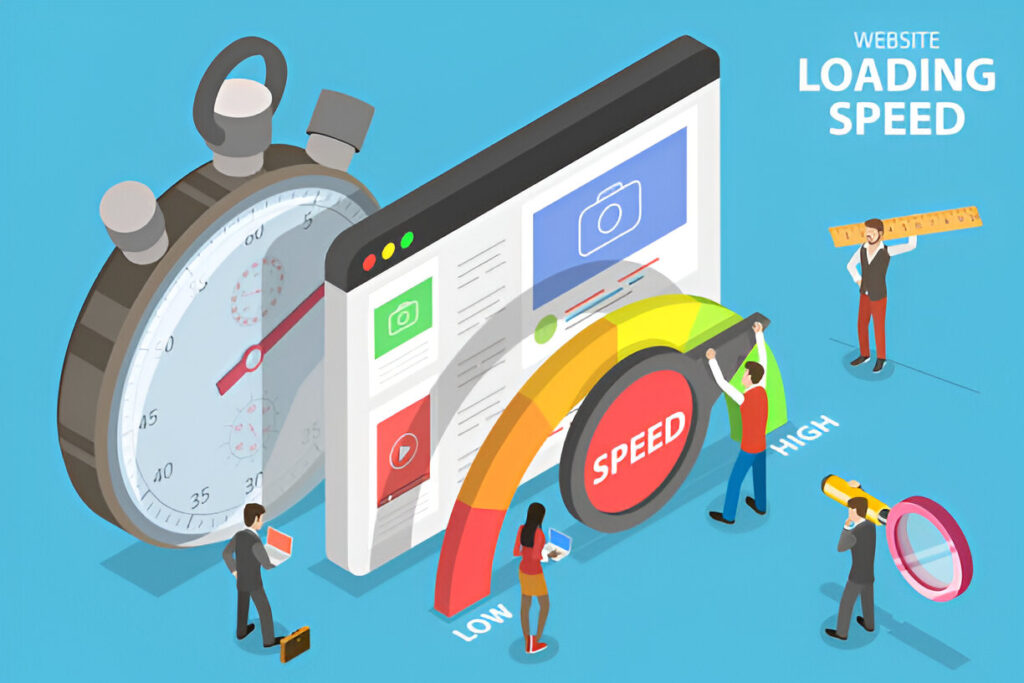In today’s fast-paced digital world, website page speed is a crucial factor that can make or break the user experience. A slow-loading website can frustrate visitors, leading to higher bounce rates and lower conversion rates. On the other hand, a fast website enhances user satisfaction, improves search engine rankings, and boosts overall performance. In this detailed guide, we’ll delve into the importance of website page speed, how to measure it, and practical tips to optimize it.
Why Website Page Speed Matters
- User Experience: Modern users expect websites to load quickly. A delay of even a few seconds can lead to a poor user experience, causing visitors to leave the site prematurely.
- SEO Ranking: Google and other search engines consider page speed as a ranking factor. Faster websites are more likely to rank higher in search engine results, driving more organic traffic.
- Conversion Rates: Speed directly impacts conversion rates. Studies show that faster websites have higher conversion rates, leading to more sales and engagement.
- Mobile Users: With the rise of mobile internet usage, having a fast website is more important than ever. Mobile users often have slower internet connections, making page speed a critical factor in retaining mobile visitors.
How to Measure Website Page Speed
Several tools can help you measure and analyze your website’s page speed. Some of the most popular ones include:
- Google PageSpeed Insights: This tool provides a detailed report on your website’s performance on both mobile and desktop devices, along with suggestions for improvement.
- GTmetrix: GTmetrix analyzes your website’s speed and provides a comprehensive report, including recommendations for optimization.
- Pingdom: Pingdom offers a user-friendly interface to test your website’s speed and provides insights into performance bottlenecks.
- WebPageTest: This tool allows you to run speed tests from multiple locations worldwide, providing detailed performance metrics and recommendations.
Factors Affecting Page Speed
- Server Response Time: The time it takes for your server to respond to a request plays a significant role in page speed. Opt for a reliable hosting provider and consider using a Content Delivery Network (CDN) to reduce latency.
- Image Optimization: Large, unoptimized images can significantly slow down your website. Use image compression tools and modern formats like WebP to reduce file sizes without compromising quality.
- Minimize HTTP Requests: Each element on your webpage (images, scripts, stylesheets) requires an HTTP request. Reducing the number of these requests can speed up your website.
- Browser Caching: Leveraging browser caching allows you to store frequently accessed resources on the user’s device, reducing load times for subsequent visits.
- Minify CSS, JavaScript, and HTML: Minification removes unnecessary characters from your code, such as whitespace and comments, resulting in smaller file sizes and faster load times.
- Use Asynchronous Loading: Load JavaScript and CSS files asynchronously to prevent them from blocking the rendering of the page.
Practical Tips to Optimize Page Speed
- Choose a Fast Hosting Provider: A reliable and fast hosting provider is the foundation of a speedy website. Consider options like VPS, dedicated servers, or managed WordPress hosting for better performance.
- Enable Compression: Use Gzip or Brotli compression to reduce the size of your HTML, CSS, and JavaScript files.
- Optimize Images: Compress and resize images, and use responsive images to ensure they load quickly on all devices.
- Leverage Browser Caching: Set appropriate cache expiration times for different types of content to reduce the load on your server.
- Minimize Redirects: Each redirect adds additional time to the page load. Minimize the number of redirects to improve speed.
- Use a CDN: A Content Delivery Network (CDN) distributes your content across multiple servers worldwide, reducing latency and speeding up load times for users across different geographical locations.
- Implement Lazy Loading: Lazy loading defers the loading of non-critical resources until they are needed, improving initial page load times.
Conclusion
Optimizing your website’s page speed is essential for providing a seamless user experience, improving search engine rankings, and boosting conversion rates. By understanding the factors that affect page speed and implementing the practical tips outlined in this guide, you can create a fast and efficient website that keeps visitors engaged and satisfied. Remember, a fast website is not just a technical requirement; it’s a key component of your overall digital strategy.



